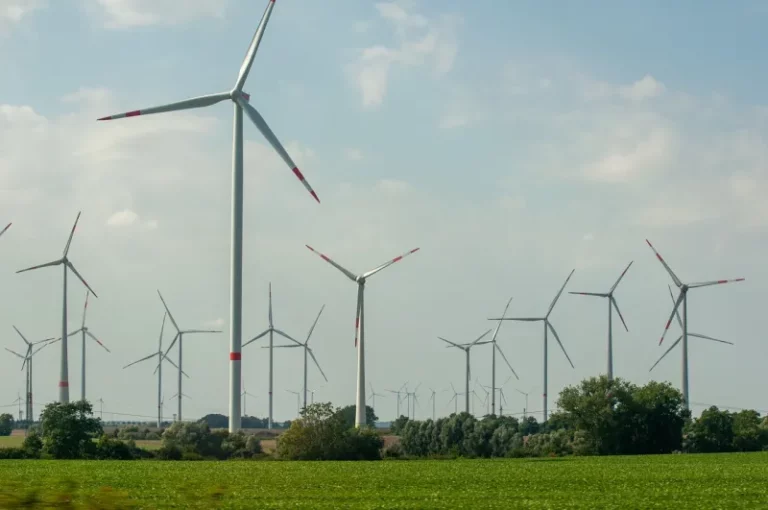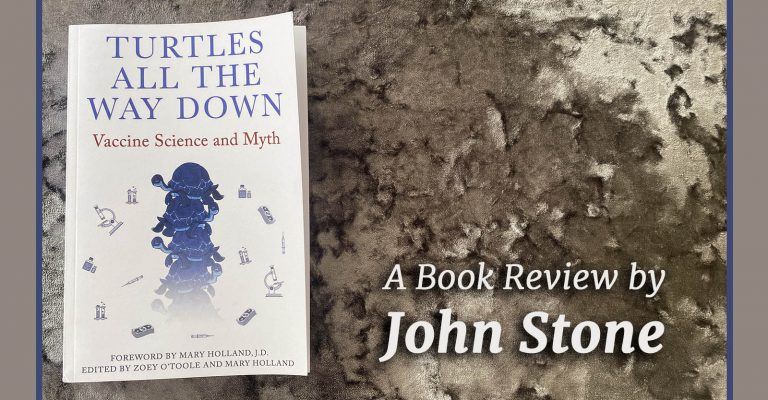Meteorology professor: “Not even the IPCC speaks of climate as an existential threat”
Originally published by Epoch Times Germany: Tim Sumpf, 14 March 2024
“If you could get rid of 60 per cent of CO₂, we’d all be dead,” says Richard Lindzen, MIT professor emeritus of meteorology, explaining the paradox surrounding the vital trace gas. However, the atmospheric scientist also points out that although science and politics sometimes talk about the same things when it comes to climate, they rarely speak the same language.

“It’s a very strange pollutant that is essential for plant life.” – Richard Lindzen, Professor Emeritus of Atmospheric Sciences and Meteorology.photo: iStock
The year is 2024 AD. The whole world is convinced of the climate emergency. The whole world? No, a growing group is standing up to the climate narrative and has signed the “World Climate Declaration”, including Nobel Prize winners, professors and researchers from a wide range of disciplines, engineers, entrepreneurs and others. In it, they publicly declare: “There is no climate emergency”.
Each of them has their own reasons why they hold this fundamentally different opinion from the zeitgeist. Epoch Times wanted to find out more and asked them. The answers are strikingly similar and in many cases are “because it’s true” and because climate is no longer about science, but about power and money.
Richard Lindzen, professor emeritus at the renowned Massachusetts Institute of Technology (MIT), told Epoch Times that labelling climate change as an existential threat is propaganda – and that while trillions of euros do not change the climate, the accompanying scaremongering does.
No climate emergency in science
The argument that there is an “existential threat” to the Earth due to rising temperatures is a “purely political statement”, explained the professor of meteorology. Not even the IPCC claims that there is an existential threat.
Instead, the “Intergovernmental Panel on Climate Change”, which is often wrongly labelled the “Intergovernmental Panel on Climate Change”, refers to scientists and climate activists who speak of an existential threat. However, the committee has never made this claim itself, Lindzen said. He went on to say:
The [climate] models have not even hinted at this. […] That’s because this was originally a political issue. And the politicians who are dealing with it are worried that their hysteria is not producing the best results. They keep switching from global average temperature to extreme weather. And you know, they keep saying: ‘Worry, worry! Panic!’ But the science has never said that [a climate emergency] exists.”
The push to declare a “climate emergency” is therefore less about science and more about money and power. “You have to ask yourself whether politicians are suffering from a form of psychosis,” Lindzen continued. “Maybe it’s neurosis. But I don’t think the attraction of political power is something that normal people find irresistible.”
Measures completely fail to address the perceived threat
Even if those in power believe that there is an existential threat from the climate, the measures they have taken to mitigate such a threat do not make sense, says Lindzen.
If you believe that CO₂ is the bad guy and that we are facing an existential threat, then net zero is the wrong policy. All the things that are being done are ridiculous. Look at how the CO₂ is behaving. We’ve spent trillions so far and it hasn’t changed one bit. It continues to rise at the same rate.”
“The sole purpose of politics is to make society poorer,” added Lindzen. “And when you’re poorer, you’re less resilient. So if you believe that CO₂ is an existential threat and your policies do nothing about it but make you less resilient, then one has to wonder if you are a pathological sadist.”
The earth is not a disc, the climate is not a one-way street
Lindzen said it was important to remember that the Earth is spherical and the major climate changes during the last glacial maximum – the last ice age – around 20,000 years ago were not caused by the greenhouse effect. Instead, it was caused by the temperature difference between the tropics and the poles.
He explained that the wave-like movements that run from west to east on the weather maps are convective movements that transport heat from the tropics to the poles.
These movements “try to create a certain temperature distribution”. Only when this has been achieved do they stop flowing. Lindzen went on to explain that this process of heat transport is similar to heating a pot of water. The bubbling movement of the boiling water is the water’s attempt to eliminate the temperature difference between the hob under the pot and the water at the top of the pot.
The situation is similar when the sun hits the surface of the earth. At the equator it hits the earth vertically, at the poles it only just touches the surface.
The Earth’s atmosphere and oceans therefore behave in a similar way to the water in the cooking pot. The heat currents essentially try to equalise the heat between the equator and the poles by distributing the temperature in waves. And that is what we understand as weather.
Moreover, this process is anything but unchanging. “If you don’t have ice [at the poles], the Earth’s surface heats up to 20 degrees Celsius, which is what it was 50 million years ago. […] But that has nothing to do with the greenhouse process,” Lindzen said.
“There is no evidence that the temperature differences between the tropics and the poles are changing. And that’s what has caused major climate changes [in the past]. The changes we’ve seen are minimal and largely due to what the tropics are doing.”
Warming real, but neither threatening ..
In the EpochTV programme “American Thought Leaders” with Jan Jekielek, Richard Lindzen also explained that although the global temperature rise due to the greenhouse effect is real, it is only slight. The warming is also mainly caused by water vapour and clouds, while carbon dioxide, methane and nitrogen oxide only make a small contribution:
“If all other things remain constant and you double the CO₂, you would get a little less than one degree [Celsius] of warming,” said Lindzen. However, some climate models estimate warming of up to 8.5 °C. In reality, however, achieving such values is practically impossible due to limited resources – we would run out of coal, oil and gas to burn before then.
In its report, the IPCC for its part speaks of a three per cent decline in global economic output by 2100 due to climate change, Lindzen said. He then added: “If you assume that GDP will have increased many times over by then, that doesn’t sound existential for most people.”
… still unusual
There is also the argument that, compared to the major climate changes in the Earth’s history, a warming of “three degrees could be something serious”. At the same time, the meteorology professor referred to two specific climate events in which the average temperature difference to today was around five degrees.
One of these events was the last glacial maximum, also known as the Weichselian Ice Age, when parts of Central Europe were buried under kilometres of ice. “The last ice age peaked about 20,000 years ago, when global temperatures were likely about 5°C colder than today,” according to the US National Oceanic and Atmospheric Administration (NOAA). – In earlier ice ages, it was far colder than today, with a difference of ten to 15 degrees Celsius.
The second event was the warm period around 50 million years ago, when alligator-like creatures lived on Svalbard, an archipelago north of the Arctic Circle that now belongs to Norway. During this hot period about 55 to 56 million years ago, the average global temperature “appears” to have been about seven degrees Celsius higher than today’s temperature, according to the NOAA.
The warming of the last 150 years since the pre-industrial era, in turn, bears “no resemblance” to these two major climate changes, Lindzen said. While the temperature difference between the tropics and the poles increased by 20 degrees Celsius during the last glacial maximum and decreased by 20 degrees Celsius during the warm period, the difference today remains the same at all locations from the tropics to the poles.
“The temperature difference between the tropics and the poles depends on the dynamics of heat transport through movement. To some extent, the [meteorological] equator depends on the greenhouse effect,” he said.
CO₂ – dangerously essential for life
“CO₂ reduction is a regulator’s dream. If you control CO₂, you control breathing; if you control breathing, you control everything. So that’s always one temptation,” Lindzen said. “The other temptation is the energy sector. No matter how much you clean up fossil fuels, they will always produce water vapour and CO₂.”
CO₂ is treated like a poison, the scientist explained, and most people actually believe that CO₂ is dangerous. Yes, it is toxic, in high concentrations. “But worse still,” the meteorologist describes the paradox of CO₂, “it is essential for life”:
If you could get rid of 60 per cent of CO₂, we would all be dead. This is a very strange pollutant that is essential for plant life.”
“The concentration of CO₂ in your mouth is about 40,000 parts per million [ppm] as opposed to 400 outside,” Lindzen continued. A concentration of 5,000 ppm is permitted on a space station and 1,000 ppm is aimed for in greenhouses to increase yields. Nevertheless, the gas is demonised “because it is the unavoidable product of burning fossil fuels in the energy sector”.
Science creates climate policy creates science
The IPCC produces reports on climate change that are often thousands of pages long. At the same time, it produces a summary for policy makers with “iconic statements” that summarise thousands of pages in one sentence, says Lindzen. However, only the reports produced by the IPCC’s Working Group 1 are scientific, he said. “Everything else is written by government officials and so on, so it’s tricky.”
“Politicians and non-scientists have realised that science has some authority in the public eye, and they want to hijack it for themselves, so they bring the term ‘the science’ into play,” Lindzen said.
Thus, an innocent statement by scientists can quickly be portrayed as “catastrophic” by politicians, who then allocate more funding for scientific research in this area, which neither the scientific community nor the United Nations would oppose, Lindzen said.
“But that’s not what science is. Science is a kind of enquiry,” he said. Science is evolving. “Those who claim science has settled wish to shell out all disagreement because they don’t have much to present.” Continuing, he said:
The moment you hear the phrase ‘scientists agree’, you know something is wrong.”
“Almost impossible to criticise”
Science is always ready to be scrutinised. It relies on questions and on being wrong, the scientist said. “If you say that science can’t be wrong, you’ve stifled science.” Nowadays, it is almost impossible to publish a scientific paper that challenges the prevailing narrative.
For example, scientific journals employ reviewers who can recommend significant revisions to a paper that challenges the climate narrative, the scientist explained. The revisions keep the author busy for a year and then the paper is rejected. If the work is then published elsewhere, it is said that it is not in one of the well-known scientific journals, which is why the whole thing cannot be trusted.
Lindzen said he has a list of prominent scientists, including directors of major research centres, heads of weather bureaus or international organisations, who have been suppressed since the early 1990s.
Climate is one of the earliest examples of the so-called cancel culture.”
On the other hand, “funding for climate[research ] increased 15-fold overall,” creating a new community that exists only because of the climate narrative, Lindzen says. The result is that no one in the mainstream media questions it.
About the World Climate Declaration
The World Climate Declaration was launched by the Global Climate Intelligence Group (CLINTEL). CLINTEL, in turn, was founded in 2019 by Guus Berkhout, Professor Emeritus of Geophysics, and science journalist Marcel Crok. Its main objective is to “create knowledge and understanding of the causes and effects of climate change and the impact of climate policy” The basis for this is “objective and transparent communication of the facts about climate change and policy” and when these give way to assumptions and suppositions.
The World Climate Declaration summarises the key points of “climate realists” on one A4 page. The core statement says: “Climate science should be less political and climate policy more scientific.” Specifically, (climate) scientists should “openly address uncertainties and exaggerations in their predictions of global warming, while politicians should dispassionately weigh up the real costs and supposed benefits of their policies.”
As of 7 March 2024, 1,904 signatories have joined the group of “unbending” scientists. The full text of the declaration and the complete list of supporters can be found at clintel.org/world-climate-declaration.
Other selected voices on climate:
Gulf Stream tipping point is based on “media-connectable apocalypse study ” – Jochem Marotzke, Professor of Physical Oceanography and Co-Director at the Max Planck Institute for Meteorology
CO₂ is too weak to influence temperatures. – John K. Dagsvik and Sigmund H. Moen, Central Statistical Office Norway
“Only computer models link warming to CO₂.” – Ralph Alexander, physicist and author of “Science Under Attack: The Age of Unreason”
“The alleged climate emergency is a […] deliberately used lever to destroy our economy.” – Hans-Georg Maaßen, lawyer and former President of the Federal Office for the Protection of the Constitution
“The climate […] [is] no longer analysed scientifically. Rather, it has become a question of faith.” – Haym Benaroya, Professor of Mechanical and Aerospace Engineering
CO₂ is the “most expensive scam in history”. – Edwin Berry, atmospheric physicist and certified consulting meteorologist
“The probability of dying because of a weather disaster has fallen by more than 95 per cent.” – Axel Bojanowski, chief science reporter for “Die Welt”
“The concern about global warming is a total fabrication.” – John Clauser, physicist, Nobel Prize winner (2022), among others at the University of California, Berkeley
“There is a lot of climate exaggeration.” – Bill Gates, co-founder of Microsoft
“97 per cent of climate scientists” […] are anything but in agreement. – Marcel Crok, science journalist, founder of CLINTEL
“Climate protection is a gift for the world, but not really for the environment.” – Florian Josef Hoffmann, lawyer, author and publicist
Suggest a correction






